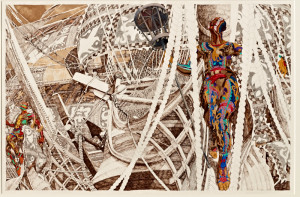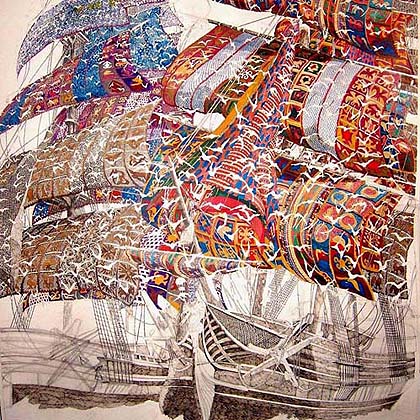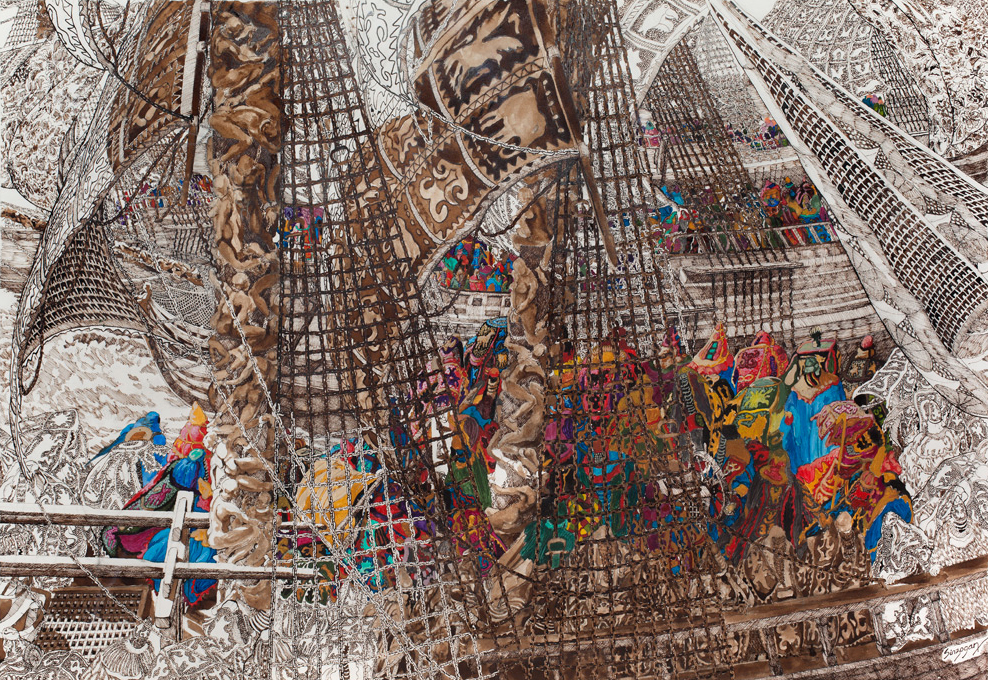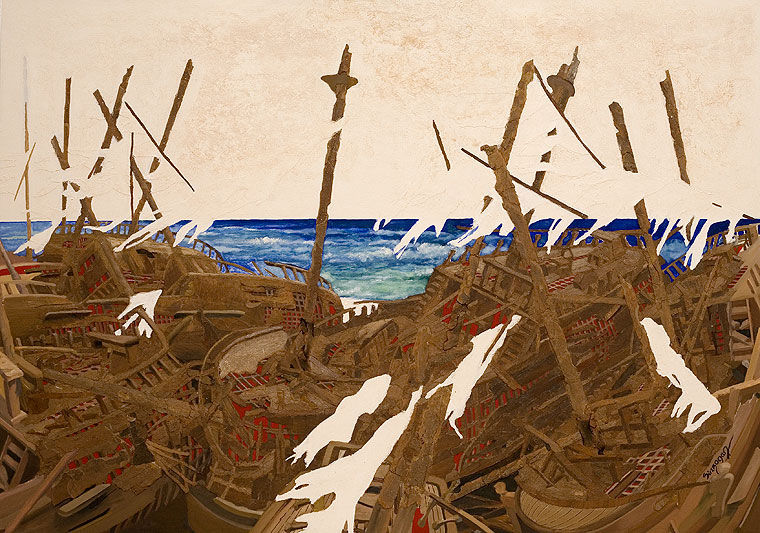
Memories (2009) of Julien Sinzogan is in the collection of Cantor Arts Center Stanford University, USA.
About:
Julien Sinzogan was born in 1957 in Porto-Novo, Republic of Benin. He studied architecture in Paris at the École Spéciale des Travaux Public, and later ran a department of computer images before turning to painting professionally. He lives and works in France. Sinzogan has exhibited throughout Europe and Africa in both group and solo shows, including Spirit Worlds at the October Gallery, London (2010) and a specially-commissioned piece for theUncomfortable Truths Exhibition at the Victoria and Albert Museum, London (2007).
 Spirit World, 2010.
Spirit World, 2010.
Sinzogan’s work subtly expresses the way of life informed and inspired by the Yoruba divinatory and religious system known as Ifa. The Yoruba people of Nigeria and Benin in West Africa see life as taking a cyclical trajectory through which individuals experience the tangible world (aye), depart to the spirit world (orun) and are reborn. Sinzogan’s works explore the journeys between these different but closely related worlds. The voyages between such realms lie at the heart of religious practice across much of the Atlantic world, a world forever shaped by another voyage: the middle passage of the Atlantic slave trade.
 Desenchainement 2, 2013.
Desenchainement 2, 2013.
Sinzogan’s mixed-media and fine pen-and-ink works conjure the world of the spirits and their gods (vodun and orisha), the gods to whom millions of enslaved Africans would have prayed, departing through the ‘Gates of No Return’ in the slave ports of the West African coast. Yet Sinzogan does not portray these ports as sites of loss, but as triumphant arrival points for the homeward return of lost spirits about to be reborn. The galleons in his works are not the dark evil-smelling slave ships of the Europeans, but are in the process of being transformed by their African cargoes into colourful and triumphant symbols of resistance. Above the sepia-tinted decks of the phantom caravelles racing under full canvas towards the African coast, the sails come to life with the richly coloured motifs of the Egungunmasquerades, which celebrate the ancestor’s return to their native villages. These powerful symbolic images work as a salve to ease the lingering sore of that long compact of blood sealed between the African and European powers. Thus does art, by holding up a mirror reflecting our shared past, render more clearly visible the path of our common future. (text October Gallery London)
 2009.
2009.
Courtesy: October Gallery London
